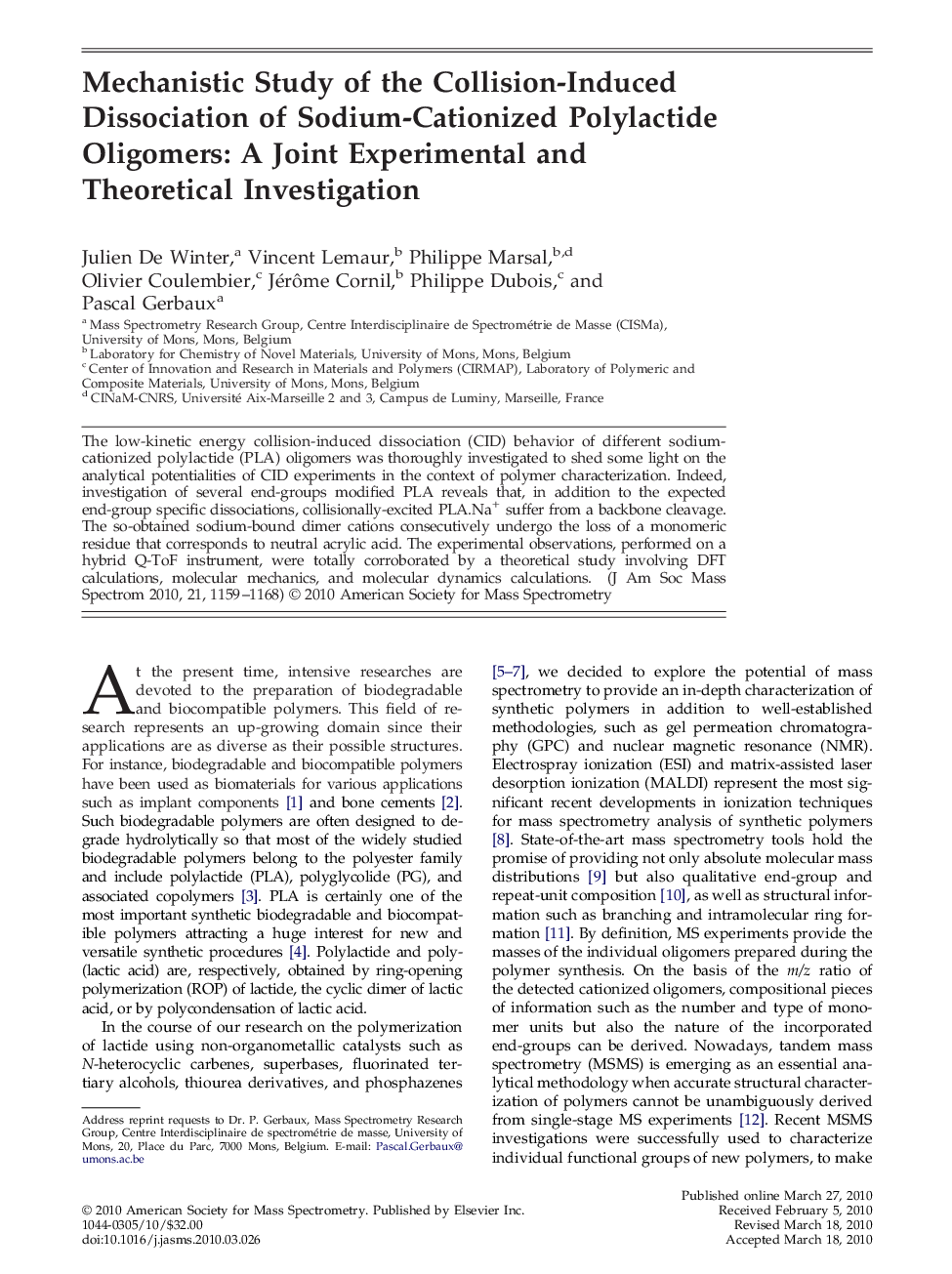| Article ID | Journal | Published Year | Pages | File Type |
|---|---|---|---|---|
| 1195392 | Journal of the American Society for Mass Spectrometry | 2010 | 10 Pages |
The low-kinetic energy collision-induced dissociation (CID) behavior of different sodium-cationized polylactide (PLA) oligomers was thoroughly investigated to shed some light on the analytical potentialities of CID experiments in the context of polymer characterization. Indeed, investigation of several end-groups modified PLA reveals that, in addition to the expected end-group specific dissociations, collisionally-excited PLA.Na+ suffer from a backbone cleavage. The so-obtained sodium-bound dimer cations consecutively undergo the loss of a monomeric residue that corresponds to neutral acrylic acid. The experimental observations, performed on a hybrid Q-ToF instrument, were totally corroborated by a theoretical study involving DFT calculations, molecular mechanics, and molecular dynamics calculations.
Graphical AbstractUpon collisional activation, Na+-cationized polylactide oligomers undergo backbone cleavages, ultimately leading to nonspecific end-group dissociations.Figure optionsDownload full-size imageDownload high-quality image (82 K)Download as PowerPoint slide
